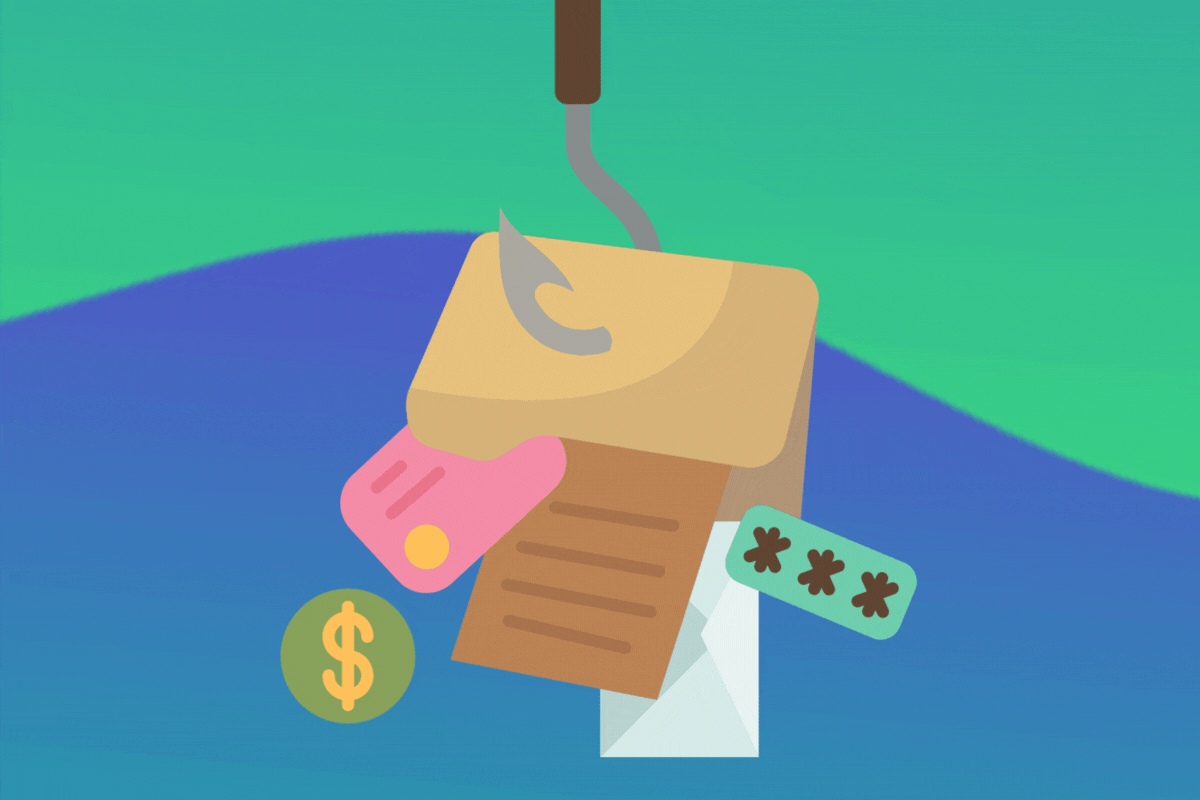October may bring images of spooky ghosts and goblins, but it’s also the time to think about another frightening prospect: your personal information getting leaked from cyber attacks.
This month is Cybersecurity Awareness Month, a global effort to raise awareness on how we all can keep our digital lives safe and to encourage individuals and organizations (both large and small) to be proactive about protecting themselves online.
This year is the 19th annual observance of Cybersecurity Awareness Month, which started in 2004. But is cyber security that big of a deal to have a whole month dedicated to it? The Cybersecurity & Infrastructure Security Agency (CISA) and the National Cybersecurity Alliance (NCA) certainly believe so as they are the lead sponsors of the month-long event.
It’s no surprise that cyber security is more important than ever. With increasing reliance on technology for everything from simple communication to complex financial transactions, there are more opportunities than ever for hackers to access personal information and cause harm. But thankfully there are simple steps that everyone can take to strengthen their online security (plus one controversial strategy to stay safe).
The Very Basics to Stay Safe
Cyber security and this month dedicated to the awareness of it matters because YOU matter! Cyber security really is all about you: the safety of your sensitive data and your devices.
Instead of having to rely mostly or even solely on an IT person at your job or a tech savvy family member, you can be proactive about protecting yourself. Employing these easy, basic strategies will enable you to take the protection of yourself into your own hands during Cybersecurity Awareness Month and beyond.
Use Strong Passwords and Password Management

If you’re like most of us non-ghouls, i.e. humans, you likely have over 10 online accounts that you have to remember the passwords for. Who are we kidding, it’s probably closer to 100 or more accounts! And if your passwords are something along the lines of password123! or your email address with numbers added to the end of it, you’re practically begging to be hacked.
Thankfully, there are basic password guidelines you can follow to greatly reduce the chances of your accounts getting compromised – that is, as long as you don’t write your passwords down anywhere nor share them with anyone.
Related article: “Good Passwords: How To Protect Yourself From Hackers”
Make sure your passwords are:
- Lengthy – try to use passphrases as often as possible
- Easy to remember but hard to guess
- Not used across multiple accounts
- Not created using any of your personal information
And to help you keep track of your many passwords so that you don’t end up writing them down for someone to steal, you can use a free yet encrypted password manager, like Bitwarden. Even if you use a password manager on your job, like LastPass, you’ll still want to make sure that you use a password manager for your personal accounts.
Use Anti-Virus and Anti-Malware Software
The Internet may be one of humanity’s greatest innovations, but it is full of very real threats. Whether it’s ransomware holding your files hostage or personal information being stolen, the consequences of a cyber attack can have devastating impacts on individuals, businesses, and critical infrastructure.
That’s where anti-virus AND anti-malware software come in. These programs work to actively identify and block malicious software, safeguarding not only your computer but also any sensitive information stored on it. And while you may be tempted to save a few bucks by skipping out on these important (and often affordable) tools, remember that the cost of a cyber attack could be far greater in terms of money or lost or leaked information.
So do yourself (and your personal data) a favor and make sure you’ve got reliable anti-virus and anti-malware software installed on your computer and keep it updated regularly to keep the Internet monsters at bay. It’ll be one less thing to keep you up at night.
Beware of Phishing and Smishing Attempts

Chances are, you’ve heard the term “phishing” before – but what about “smishing?” Both of these deceitful tactics aim to obtain your sensitive personal information such as passwords and credit card numbers.
Phishing generally involves fraudulent emails or websites that appear legitimate, while smishing uses text messages on mobile phones to achieve the same goal. These scammers rely on their victims not recognizing the red flags, so it’s important to remain vigilant. One way to tell if a message is a phishing or smishing attempt is by checking for poor grammar and spelling errors – most legitimate companies would have someone proofread their communication.
Another key indicator is the urgency of the message – if it tells you that your account will be closed unless you immediately provide personal information, it’s likely a scam. Trust your gut – if something seems off about the message, do not respond and instead report the message to your email or mobile provider immediately.
Related article: “How to Stop Spam Texts”
One simple tip to prevent yourself from downloading an exploit from a phishing email or smishing message is to never click on links in unexpected emails or texts. If a company unexpectedly reaches out to you, verify their contact information by doing your own research and initiate a separate conversation with them to see if it was really them who reached out to you in the first place.
Use Two-Factor Authentication/Multi-Factor Authentication
Another basic way that has become an absolute must-have to protect your sensitive information is two-factor authentication (2FA), also called multi-factor authentication. Two-factor authentication is an extra layer of protection for your online accounts.
When logging in, you’ll not only need your username and password, but also a code from a text or email asking you to confirm it was really you trying to access the account. This helps prevent hackers from accessing your accounts even if they manage to steal your passwords by using guesses, password cracking software, or stolen information.
It’s worth the extra few minutes to set up – just think about how much damage someone could do if they got into your email or bank account. Two-factor authentication just may be the thing that saves you from becoming the victim of a cyber attack in the near future.
A Controversial Strategy

If you are a Windows PC user, this one particular (and much debated) strategy could save you or, most especially, your not-so-tech-literate loved ones from a cyber attack on a Windows machine.
Ever heard of the term “walled garden?” It’s basically a closed-off ecosystem where you can only access certain apps and features, like Apple’s App Store. Well ever since the release of Windows 10, Windows ‘S Mode‘ takes that concept and runs with it. With this mode activated on a Windows computer, you’re limited to downloading only Microsoft Store apps. That means no Google Chrome or Adobe Photoshop – just what Microsoft has approved for its store.
Because S Mode is a streamlined version of the Windows operating system that only allows apps from the Microsoft Store, that means these apps have been verified by Microsoft for security and performance. By leaving S Mode turned on (which it is by default upon first setup of your Windows 10 or higher machine), you reduce your chances of downloading software that can steal your sensitive information or ransomware your data.
However, the reason why leaving S Mode on is a controversial way of implementing computer security is because it limits your choice and becomes a hassle if you rely on certain non-Microsoft-approved programs for work or play. S Mode sounds nice in theory when it comes to really locking down your computer, but it could leave you feeling trapped in Microsoft’s garden.
Resources to Teach Yourself About Cyber Security
We hope you now feel confident that protecting your personal data and devices is within your power by using the basic strategies above.
To keep empowering yourself, we’ve listed additional cyber security learning resources for you:
- The CISA Cybersecurity Awareness Month Toolkit
- National Initiative for Cybersecurity Education (NICE)
- Tips from the National Cybersecurity Alliance (NCA)
- FBI Safety Tips
- CSR4W Safety Tips
Resources for Company Leaders
If you are a cyber security leader for an organization, here are some helpful links:
Quick FAQs on Cybersecurity Awareness Month

What is Cybersecurity Awareness Month?
Started in 2004, Cybersecurity Awareness Month is every October and is a time to remind ourselves about the importance of online safety. It’s like wearing sunscreen, except for your digital life. Just as you wouldn’t sit outside for hours without protection from the sun, it’s important to take precautions when browsing the Internet too.
This includes creating strong passwords, avoiding suspicious links or emails, and backing up important data. Even something as simple as regularly updating your software can make a huge difference in protecting yourself from cyber attacks.
So remember to stay cyber safe this October (and every month)! After all, nobody wants their personal information hacked like they forgot to put on SPF 50. Happy Cybersecurity Awareness Month!
What is this year’s theme?
It’s easy to think of cyber security as something for tech professionals or government agencies to handle, but the reality is that we are so interconnected that it affects us all. That’s why this year’s theme for Cybersecurity Awareness Month is “See Yourself in Cyber.”
This reminder that individuals have a role to play in safeguarding their online information and activities comes at a crucial time, with incidents of cyber crime on the rise and new technologies presenting even more opportunities for malicious actors. It’s important for everyone, from business owners to individuals managing personal accounts and devices, to take a few simple steps toward securing their data.
From choosing strong passwords to identifying phishing emails, we all have the power to make better choices and take proactive steps to guard against cyber threats. After all, effective cyber security isn’t just the responsibility of IT professionals – it’s something we can all take part in to keep all of our connected digital lives safe.
What hashtags are associated with Cybersecurity Awareness Month?
#BeCyberSmart and #CybersecurityAwarenessMonth
Related Articles:
– How To Get Into Cyber Security: Entry-Level Cyber Security Jobs
– What is Cyber Security?

